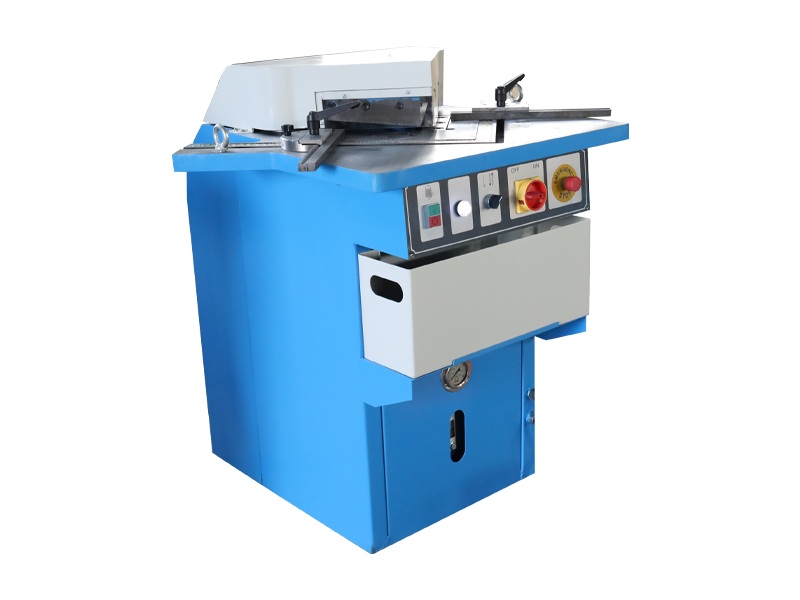Selecting the right automatic deburring machine is a technically nuanced decision—one that hinges on aligning machine capabilities with your manufacturing’s specific demands for precision, throughput, and material compatibility. In industries ranging from aerospace (AS9100 compliant) to automotive (IATF 16949) and medical device (ISO 13485) production, automatic deburring is no longer a “value-add” but a mandatory step: it eliminates burrs (per ISO 13715 Class 1–3 standards), creates controlled edge radii (DIN 4063), and ensures parts meet safety, fit, and aesthetic requirements. This guide distills the technical essentials—machine classifications, performance metrics, and selection criteria—to streamline your decision-making.
1. The Strategic Role of Automatic Deburring in Modern Manufacturing
Manual deburring (e.g., hand filing, sanding) suffers from inherent limitations: inconsistent edge quality (±0.1–0.3mm tolerance), high labor costs ($25–$40/hour per operator), and productivity bottlenecks (≤50 parts/hour). Automatic deburring machines address these pain points by leveraging mechanized, repeatable processes that:
- Maintain edge rounding tolerances of ±0.02–0.05mm (critical for fatigue-resistant components like automotive crankshafts or aerospace brackets).
- Integrate with CNC workflows and MES (Manufacturing Execution Systems) for lights-out production.
- Reduce non-conforming parts from 15–20% (manual) to 2–3%, cutting scrap and rework costs.
Their value is further amplified in high-volume or precision-critical applications—where even a 0.05mm burr can cause seal failure, accelerate wear, or pose laceration risks to end-users.
Automatic deburring machines are engineered for specific part geometries, materials, and production volumes. Generic categorizations (e.g., “industrial equipment”) fail to capture their technical nuances—below is a precision-focused breakdown:
2.1 Through-Feed Automatic Sheet Metal Deburrers
Core Technology: Conveyor-driven systems with dual-sided abrasive modules (top/bottom) using ceramic brushes, wire wheels, or sanding belts (P80–P320 grit). Many include integrated edge rounding tools (adjustable radius: 0.1–1mm).
Key Specs: Feed rate (1–6 m/min), maximum sheet size (up to 2m × 4m), material thickness capacity (0.5–10mm).
Ideal Use Case: High-volume flat钣金 (sheet metal) production—e.g., laser-cut automotive body panels, HVAC duct flanges, or appliance chassis. Excels with mild steel (Q235), aluminum (6061-T6), and stainless steel (304).
Notable Advantage: Processes 500–1,200 parts/hour with uniform edge finish (Ra 0.8–3.2 μm), eliminating “handheld inconsistencies.”
2.2 Robotic Arm Automatic Deburrers
Core Technology: 4–6 axis robotic arms (repeatability: ±0.02mm) fitted with force-controlled tools (carbide mills, abrasive discs, or ultrasonic blades). CNC-programmed to adapt to 3D part geometries.
Key Specs: Cycle time (10–60 seconds/part), tool changeover time (30–60 seconds), part size range (5mm–1m).
Ideal Use Case: Complex, high-mix parts—e.g., welded aerospace brackets, electric vehicle (EV) battery enclosures, or medical device housings (titanium Ti-6Al-4V).
Notable Advantage: Navigates undercuts, internal cavities, and irregular surfaces that through-feed machines cannot reach. Integrates with vision systems for part positioning accuracy.
2.3 Vacuum-Fixtured Automatic Deburrers
Core Technology: Precision vacuum chucks (suction pressure: 0.8–1.2 bar) secure small/delicate parts while spindle-mounted tools (miniature brushes or diamond tips) remove burrs.
Key Specs: Chuck size (up to 500mm × 500mm), spindle speed (10,000–40,000 RPM), maximum part weight (≤5kg).
Ideal Use Case: Micro-components or fragile parts—e.g., electronic connectors, watch gears, or thin-gauge aluminum heat sinks (0.2–0.5mm thick). Prevents part deformation common with mechanical clamping.
2.4 Food Industry-Specific Automatic Polishing/Deburrers
Core Technology: Sanitary-grade stainless steel (316L) construction, FDA-compliant abrasive media (nylon brushes, non-toxic buffing compounds), and IP67 waterproofing.
Key Specs: Polishing speed (1–3 m/min), surface finish (Ra 0.4–1.6 μm), compliance with EU 10/2011 (food contact materials).
Ideal Use Case: Kitchen equipment (stainless steel sinks, utensil sets) or food processing machinery (conveyor belts, mixing bowls). Ensures burr-free, hygienic surfaces that resist bacterial growth.
3. Unmatched Advantages of Automatic Deburring (Data-Backed)
Beyond replacing manual labor, automatic systems deliver quantifiable value that impacts your bottom line and quality metrics:
- Precision Consistency: Robotic and through-feed machines maintain edge rounding tolerances of ±0.03mm—critical for aerospace fasteners (AS9100 requires ≤0.05mm deviation) and medical tools (ISO 13485 mandates burr-free lumens).
- Throughput Gains: A single through-feed deburrer processes 5–10x more parts than a team of 3 manual operators (e.g., 800 vs. 80钣金 panels/hour).
- Labor Cost Reduction: Automating deburring cuts labor expenses by 60–70%. For a high-volume shop processing 10,000 parts/day, this translates to $80,000–$120,000 in annual savings (based on $30/hour labor).
- Safety Compliance: Eliminates 90% of laceration risks associated with manual deburring (OSHA reports 30% of metalworking injuries stem from sharp part handling).
4. Technical Selection Criteria: Avoid Costly Mismatches
The “right” machine is not the most advanced or cheapest—it’s the one that aligns with your material properties, part complexity, and production economics. Focus on these non-negotiable factors:
4.1 Material Hardness & Compatibility
- Soft Metals (Aluminum 5052, Brass): Avoid aggressive ceramic media (risk of over-removal). Opt for vacuum-fixtured machines with nylon brushes or low-pressure robotic tools.
- Medium-Hard Metals (Mild Steel Q235, Stainless Steel 304): Through-feed machines with ceramic brushes (P120 grit) balance speed and finish.
- High-Hardness Alloys (Titanium Ti-6Al-4V, Tool Steel H13): Robotic systems with diamond-tipped tools or ultrasonic deburring (reduces heat-induced material damage).
4.2 Part Geometry & Volume
- Flat, High-Volume (≥1,000 parts/day): Through-feed machines (lowest cost per part: $0.10–$0.30).
- 3D, High-Mix (50–500 parts/day): 6-axis robotic deburrers (flexible programming for frequent job changes).
- Small, Fragile (≤50mm, ≥500 parts/day): Vacuum-fixtured systems (prevents part loss/damage).
4.3 Total Cost of Ownership (TCO)—Not Just Upfront Price
A $15,000 through-feed machine may seem cheaper than a $80,000 robotic system, but TCO (5-year lifecycle) tells a clearer story:
| Cost Component | Through-Feed Machine ($) | Robotic Machine ($) |
|-------------------------|---------------------------|----------------------|
| Upfront Investment | 15,000 | 80,000 |
| Labor (1 operator) | 40,000/year × 5 = 200,000 | 20,000/year × 5 = 100,000 |
| Consumables (Brushes) | 5,000/year × 5 = 25,000 | 3,000/year × 5 = 15,000 |
| Maintenance | 3,000/year × 5 = 15,000 | 8,000/year × 5 = 40,000 |
| Total TCO | 255,000 | 235,000 |
For high-mix production, the robotic system’s lower labor costs offset its higher upfront price.
4.4 Customization & Scalability
- Adjustable Parameters: Prioritize machines with variable feed rates, brush pressure, and edge radius settings (adapts to new part designs).
- Integration Capability: Ensure compatibility with your existing CNC machines (e.g., Fanuc, Siemens controls) and MES for real-time production tracking.
- Service & Support: Choose manufacturers that offer on-site calibration (critical for robotic systems) and 24/7 technical support (minimizes downtime).


 English
English  中文
中文  Arabic
Arabic  Russian
Russian  Spanish
Spanish  Portuguese
Portuguese  French
French  German
German  Hindi
Hindi  Thai
Thai  Vietnamese
Vietnamese  Khmer
Khmer  Italian
Italian  Turkish
Turkish  Korean
Korean  Belarusian
Belarusian 

